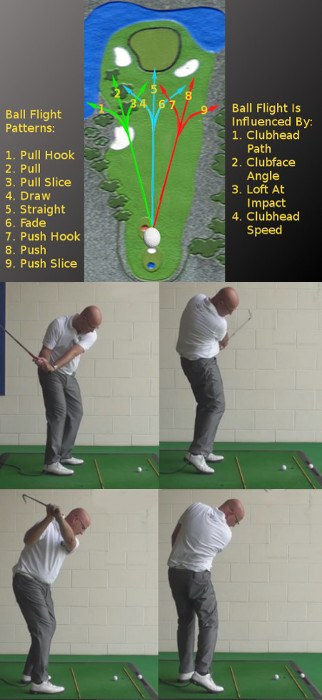
Shaping Your Shot: Draw vs. Fade
The debate has raged on for your years, since the straight shot is one of the hardest things to hit in golf and best left to the game’s professionals, should amateur golfers favor developing a left-to-right shot shape or a right-to-left one?
For people who are new to the game, a fade is a shot that moves from left to right (for right handed golfers). When the ball fades too much, the shot is called a slice. An overdone draw is called a hook. A fade is also sometimes referred to as a “cut”.
For many of us, that question is settled by our natural ability. Our “natural” golf swing likely favors a draw or a fade from that first time we tee the ball up and take the club back.
Some players however are skilled enough to develop both shots into their arsenal. Accomplished players often prefer a main shot-shape, but have the ability to make the ball to go the other way when the situation calls for it.
A majority of weekend players prefer to fade the golf ball. A large percentage of us however, especially beginners, see our fades turn into distance-draining big slices that end up in the rough or worse, a hazard or out of bounds. Slicing is the number one reason beginning golfers will seek out the help of teaching professionals. Curing a slice is also a constant source of how-to articles for golf magazines and instructional books.
Pros/Cons for Each Shot Shape
General arguments for fading the golf ball are that the shot is easier to keep in control. A fade typically flies higher and is struck with backspin which means the ball lands more softly than a draw. This is an advantage when you are hitting approach shots into greens.
Conversely, a draw is hit with top spin and usually flies lower and rolls longer. This helps players hit longer tee shots, especially on firm, fast fairways. The downside of a draw is that drives can run too far into trouble in the forms of sand traps, water hazards and out of bounds stakes. And, like a fade turning into a slice, draws can be overcooked into a big hook that put players in all kinds of places they don’t want to find themselves.
The reason the best players like to have both shot-shapes at their disposal is simple – many golf holes favor a left to right or right to left tee shots. Golfers also will employ a fade or a draw when trying to hit their approach shots close to the hole. When courses place the pin on the left side of greens, a draw is the preferred shot. When pins are in extreme right-hand positions, a golfer stands a better chance of getting it close to the hole by fading, or cutting, the ball into the green.
Golfers also categorize individual golf courses as courses that favor either a fade or a draw. A good example is Augusta National, the home of the Masters Tournament. Augusta has many holes that dogleg right to left off the tee box including number 2, 9, 10, and 13. The 18th hole at Augusta is the only one that really requires a fade. Lee Trevino was famous for hitting a uniquely low fade off the tee; a shot shape that many felt wasn’t conducive to success at Augusta. Perhaps this fact got in Trevino’s head as he never won a Masters title and sometimes even skipped the tournament.
Historians are quick to note however that Jack Nicklaus also preferred the fade and he won six Green Jackets, the most in Masters’ history. It is worth noting however that Nicklaus had a huge distance advantage off the tee compared to Trevino.
Beginning golfers should focus on determining their natural shot shape and doing everything they can to repeat that swing and produce the same consistent ball flight. While it is tempting to try to develop a ball-flight that goes against your natural tendency, that pursuit is best left to professional golfers.





